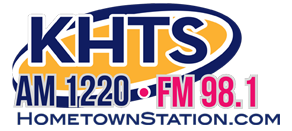by CareerBoard Network Staff
The demographics of the United States are undergoing a significant shift. The baby boomer generation, the largest in American history, is rapidly aging, creating a surge in the demand for senior care services. This presents a golden opportunity for the senior living industry, but also a pressing challenge: attracting and retaining a qualified workforce. This essay will explore the key hiring trends shaping the senior living landscape, examining the lingering effects of the COVID-19 pandemic, the rise of technology, and the evolving needs and expectations of employees.
The Post-Pandemic Rebound: Overcoming Staffing Shortages
The COVID-19 pandemic had a devastating impact on the senior living industry. Staffing shortages reached critical levels as caregivers faced health concerns, burnout, and the allure of better wages elsewhere. A 2023 report by Argentum, a leading senior living association, revealed that the industry lost over 10% of its workforce between February 2020 and January 2022 [1].
However, there are promising signs of recovery. As of October 2023, senior living employment growth is outpacing the national average, with assisted living communities even exceeding pre-pandemic staffing levels [2]. This rebound can be attributed to several factors.
Firstly, senior living facilities have increased wages and benefits to make careers in the industry more competitive. Secondly, the easing of pandemic restrictions has created a sense of normalcy, making the healthcare field less risky for some potential employees. Finally, the aging baby boomer generation itself is providing a ready pool of individuals seeking new career paths, offering valuable life experience and a natural affinity for working with seniors.
Beyond Recovery: New Strategies for Talent Acquisition
While the industry is on the right track, the projected growth in senior living jobs far outpaces the anticipated growth rate of the overall workforce. To bridge this gap, senior living facilities are adopting innovative approaches to talent acquisition.
One strategy focuses on highlighting the mission and values of the organization. Senior living offers a unique opportunity to make a tangible difference in people’s lives. Facilities are increasingly emphasizing this during recruitment, showcasing the positive impact caregivers can make on the well-being of residents. This resonates with a growing segment of the workforce seeking purpose and fulfillment in their careers [3].
Technology is also playing a crucial role in attracting talent. Platforms like Indeed and Cares are streamlining the application process, while social media is being used to showcase the positive aspects of working in senior living. Additionally, virtual reality experiences are being piloted to give potential candidates a realistic glimpse into the work environment and resident interactions.
Traditional full-time positions are not always the most attractive option for all potential employees. Facilities are exploring creative job models like part-time roles, weekend shifts, and on-demand staffing models. These options cater to a wider range of candidates, particularly those with childcare or other commitments, and can help mitigate burnout by spreading the workload.
Investing in training and development is another key strategy. Upskilling the existing workforce not only improves resident care but also demonstrates an organization’s commitment to employee growth. Training programs can be particularly attractive to younger generations who value career advancement opportunities.
The Rise of Technology: Redefining the Caregiver Role
Technology is no longer just a recruitment tool; it’s transforming the way senior care is delivered. Wearable health monitors, medication management systems, and telehealth platforms are becoming increasingly prevalent. While these technologies have the potential to improve efficiency and resident outcomes, they also require a workforce with new skillsets.
Senior living facilities are seeking caregivers who are comfortable using technology and can leverage it to enhance the resident experience. This means investing in training current staff and attracting new hires who possess a digital aptitude. Integrating technology effectively requires a shift towards a more tech-enabled care model, emphasizing collaboration between caregivers and technology.
The Evolving Employee Landscape: Meeting Modern Needs
Beyond competitive salaries and benefits, the needs and expectations of employees are also evolving. Senior living facilities need to create a work environment that fosters well-being, offers opportunities for advancement, and promotes work-life balance.
Prioritizing Employee Well-being remains a top priority, as burnout continues to plague the industry. Facilities are implementing employee well-being initiatives such as stress management programs, access to mental health resources, and flexible scheduling options. These efforts can demonstrably improve staff morale and retention.
Career Advancement Opportunities are critical for attracting and retaining talent. Creating clear career paths that showcase potential for growth can be highly motivating. This involves internal promotion opportunities, leadership training programs, and support for educational advancement.
Work-life balance is a major concern for many potential employees. Senior living facilities need to demonstrate a commitment to flexible working arrangements, predictable scheduling, and adequate breaks. This could include offering part-time positions, weekend shifts, and on-demand work options to accommodate diverse needs.








